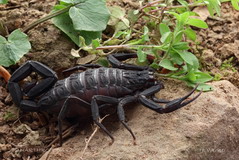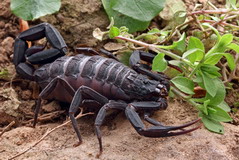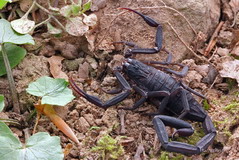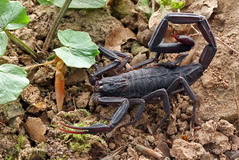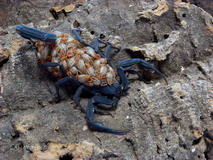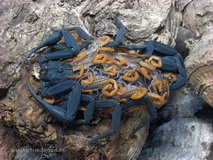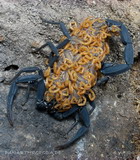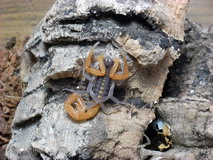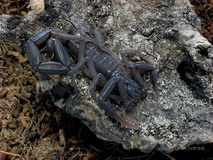- Akravidae
- Bothriuridae
- Buthidae
- Babycurus jacksoni
- Centruroides gracilis
- Centruroides meisei
- Centruroides nigrenscens
- Hottentotta hottentotta
- Lychas mucronatus
- Lychas scutilus
- Parabuthus pallidus
- Parabuthus raudus
- Parabuthus villosus "black"
- Caraboctonidae
- Chactidae
- Chaerilidae
- Euscorpiidae
- Hemiscorpiidae
- Iuridae
- Pseudochactidae
- Scorpionidae
- Superstitioniidae
- Troglotayosicidae
- Typhlochactidae
- Vaejovidae

Centruroides nigrescens (Pocock, 1898)
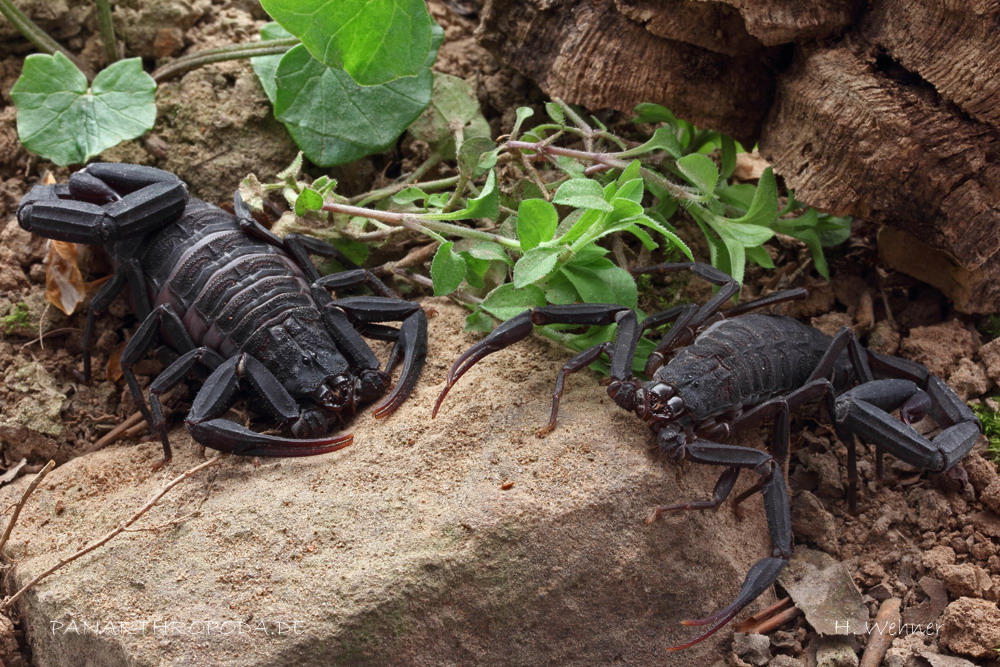
Adult pair
Origin and occurrence
This species does only occur in Mexico. The specimen I keep originated from the state of Guerrero on the south-west coast of Mexico.
The change from rainy to dry season is characteristic for the all year warm climate. These fluctuations needn't be taken into account when keeping this species though.
Appearance and sexual dimorphism
Centruroides nigrescens is a rather big species of scorpion where specimen can reach up tp 10 cm. However, the space for variation is quite big, too, so especially some males will be significantly smaller. Centruroides nigrescens is of a black color, telson and tibia/tarsus of the pedipalps are slightly reddish. During its larval stages the species undergoes a drastic change in color from gray-orange in juveniles to the matt back of the adults.
The sexes are easily distinguished by morphology. The males are smaller and the females significantly bulkier. The metasomal segments of the male are much more slender and longer.
I can not make any statements about the count of pectinal teeth, usually the crossovers are too big in Centruroides.
Behavior
Centruroides nigrescens is a relatively calm species of scorpion. When disturbed they will keep calm and search for sheltern only slowly. I can not confirm the aggression some other keepers speak of. However one should keep in mind the speed these scorpions are capable of.
As a bark-living species, Centruroides nigrescens prefers pieces of bark to climb and to retreat into, sharing hideouts in groups. Aggression inside groups is small to nonexistent. Adult specimen can be kept in groups without a problem, in juvenile specimen one should account for cannibalism, especialls during molts.
Keeping conditions
According to its origin one should keep this species at about 30 °C during day and 20 °C during night. The temperatures during night might even drop down to 17 °C. I have kept the substrat slightly wet all the time to assure the high humidity. A mixture of sand and earth can be used as substrat, humus can be used, too. A bowl for drinking is not necessary, but can be offered.
A container of 20x20x20 cm can easily house 3-4 specimen, since Centruroides nigrescens is very social and the animals will share their hideouts. As a bark-living scorpion this species perfers upright pieces of bark that are used for hiding and climbing. In doubt a higher then wider container makes more sense since this species will use the height more then the surface on the ground.
Mating and raising the young
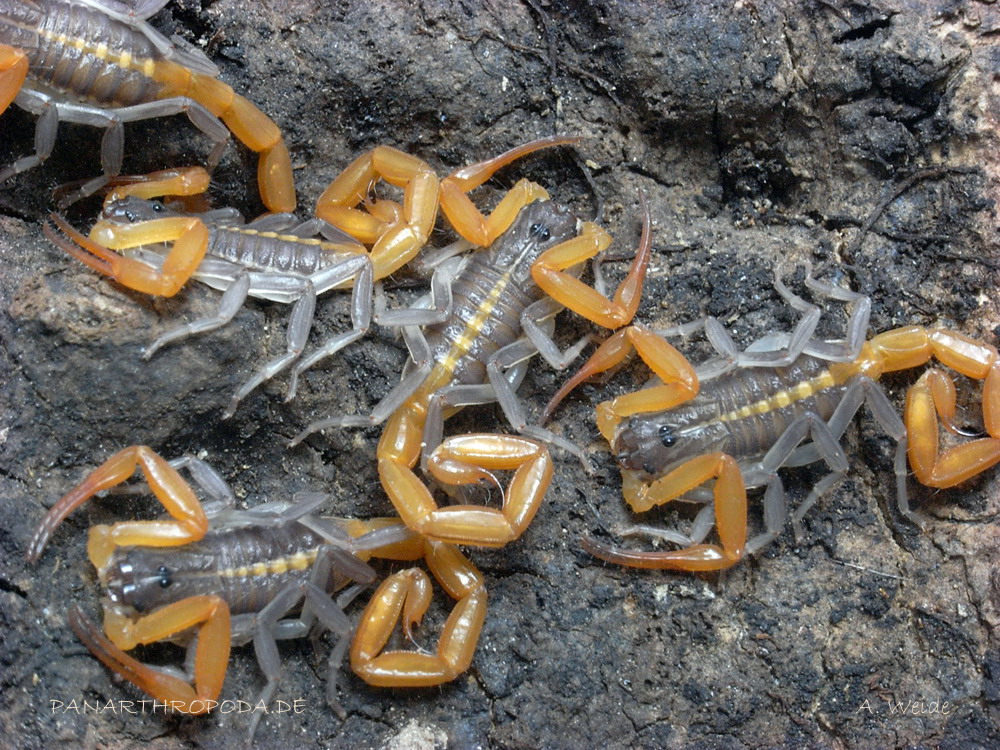
Young in second instar
When kept in groups offspring will appear almost by itself. The females will litter about 6 months after fertilization, just as a rule of thumb. To not expose the females to too much stress, one can always seperate them from the rest of the group. The young - over 50 per litter - will molt for the first time during the first week on the mother's back und leave it's back a few days later.
In second instar Centruroides nigrescens is already quite big. Small crickets can be offered without a problem. When kept and fed like mentioned above, the young will grow well and can reach adulthood within 10 to 12 months (7. instar for females, 6/7. instar for males). The young can handle dryness quite well. When kept too wet the risk of molds and mites is increased significantly. I have kept half the substrate of the young constantly moist.
Centruroides nigrescens can be kept in groups even when juvenile, but one should keep in mind the risk of cannibalism. Ample feeding and hideouts are important in this cases. Raising the young one by one is without a doubt safer.
A. Weide
